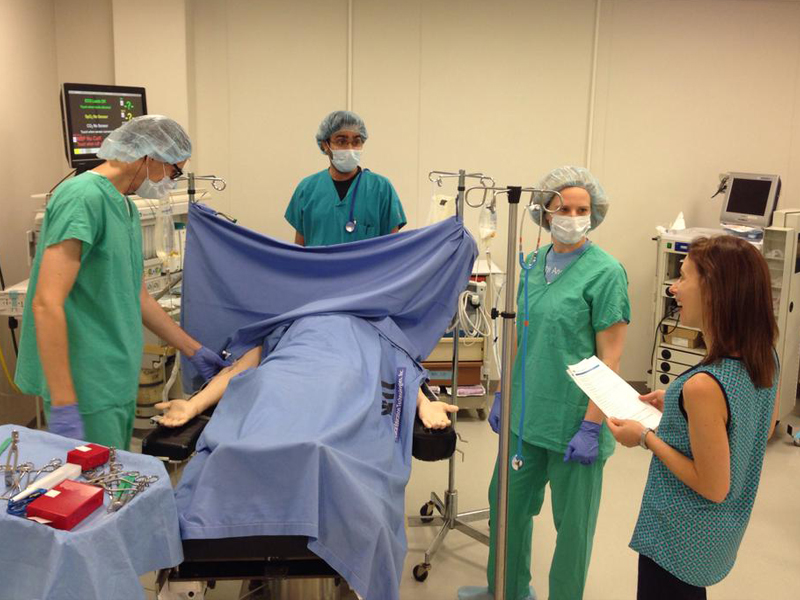Anesthesiologists – the Modern Comfort Advocates

Anesthesiologists’ main job used to be to put patients to sleep or “knock them out.” No more. They increasingly face awake patients even during hour-long long cases managing their comfort and emotional needs.
Surgeries and procedures are becoming increasingly minimally invasive. It is no longer necessary to cut people wide open for removal of a gallbladder or kidney. “Keyhole surgeries” or access with devices right through the skin via vessels have taken their place. Thus general anesthesia with breathing tubes and need to paralyze large muscle groups are no longer necessary in these cases. Instead anesthesia methods for sedation are used during which the patient remains awake and is still able to breathe. Injections of local anesthetics into the spinal canal, around larger nerves of the extremities, or between the layers of the belly muscles directly block nerves that otherwise would conduct pain. A lot of that is done now under image guidance to identify the exact location of where to inject these drugs.
I just returned from the annual meeting of the European Society of Regional Anesthesia (ESRA) in Maastricht in the Netherlands. Seeing all the ultrasound demonstrations for use of needle guidance towards the nerves made me chuckle a bit. Seems that anesthesiologists are becoming interventional radiologists! With that new approach also comes the challenge of helping anxious patients overcoming their fears so that they can cooperate and lie still.
With anesthesiologists having all possible pain and sedation drugs at their disposal, one wouldn’t think though that they are now one of the most interested groups in using nonpharmacologic analgesia techniques. I gave a talk on use of Comfort Talk for anesthesiologists at the ESRA meeting and there was a lot of interest. This was followed by two full Comfort Talk training courses in Nijmegen at Radboud University for the Anesthesia Department.
Hypnotic techniques are also doing well at other Belgian and Dutch Universities where their availability for surgeries is becoming a big marketing tool in Antwerp, Amsterdam, Liege, and Louvian. Patients now even first call anesthesiologists who provide hypnosis to find a surgeon they like to work with. Who would have thought that this would be a new route and direction of referrals?
